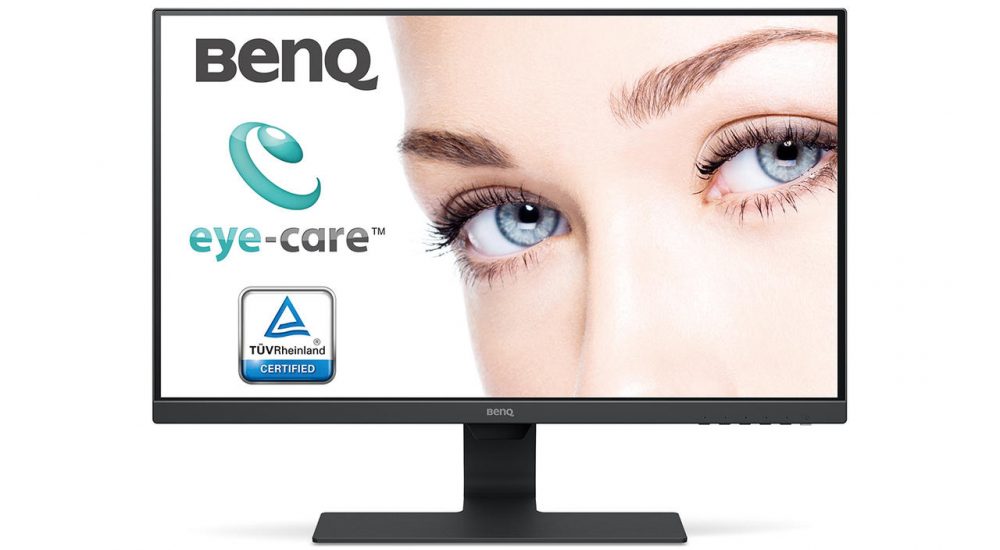Solid quality and design makes for a well- balanced and affordable screen, although the BenQ GL2580HM monitor doesn’t support FreeSync
Pros
- Decent colour accuracy
- Versatile
- Cheap
Cons
- No FreeSync
The BenQ GL2580HM may be a cheap monitor, but it’s also large. Its 24.5in diagonal matches the Iiyama panel’s size and adds half an inch over the AOC, and it comes with a 1080p resolution on its TN panel. It looks the part too. It has a tiny 1.5mm bezel that’s flush to the screen, and its base is decorated with a subtle, diamond-shaped pattern.
Its solid stand is stable, but not quite as sturdy as some of its similarly priced rivals. The back of the stand can be removed for easy cable management, which is handy, and there are HDMI and DVI connections, but no DisplayPort.
Meanwhile, the on-screen display (OSD) control system features quick navigation and a sensible menu design. The screen is also able to tilt back and forward, and attach to VESA mounts but, that’s it for adjustment.
The BenQ is priced well, too; at £115 inc VAT, it’s cheaper than AOC and Iiyama’s offerings, both of which are more expensive for a similar specification. There’s one feature missing to account for the lower price, though: FreeSync. It’s absent on the BenQ, and its refresh rate tops out at 60Hz.
That’s not a deal breaker for some people, but it does mean you won’t get tear-free gaming if you’re using an AMD GPU. If gaming isn’t an issue, though, or if you can live without active sync tech, then it’s not a huge deal. The lack of FreeSync isn’t a massive surprise either, as BenQ intends this screen to be used for all kinds of scenarios – not just gaming.

The BenQ also delivered solid results in our colour benchmarks. It achieved a Delta E figure of 1.9, and its colour temperature of 6,884 is fine, but not cool enough to make a significant difference to how the screen appears. In its favour, the BenQ’s factory gamma result of 2.13 was the closest to the ideal figure of 2.2.
The screen’s contrast and black point figures were more ordinary, though. The BenQ’s contrast ratio of 791:1 can’t stack up to the 1,103:1 scored by the Acer KG221Q, and its black point of 0.35cd/m2 is similarly middling. Neither of those results is enough to scupper gaming or video watching, but broader contrast and deeper black levels are available elsewhere.
Calibration improved the screen’s contrast ratio and black levels to 858:1 and 0.33cd/m², which are both solid jumps, and colour temperature and accuracy improved, too. Sadly, we can’t say the same about the screen’s colour modes. There’s only a general Gaming mode, rather than genre-specific options, and it made the contrast, gamma and colour temperature worse, washing out the screen with too much oversaturation.
The sRGB mode was little better, but it had a negative impact on contrast and colour temperature. That’s no surprise, though, given that this screen is designed as an all-rounder rather than a pure gaming product. Similarly, the viewing angles are fine, and the uniformity is reasonable too, with its lowest results still managing to better most of its rivals.
BenQ GL2580HM review: Verdict
There’s a lot to like about BenQ’s GL2580HM. It’s sturdy and good-looking with size on its side, and it offers decent colour accuracy and reasonable contrast, with improvements possible through calibration. The lack of FreeSync means there are better options for gaming with AMD GPUs, but the BenQ is a great alternative if you need an all-rounder that will still handle gaming for a lower price.
Source: expertreviews.co.uk




































